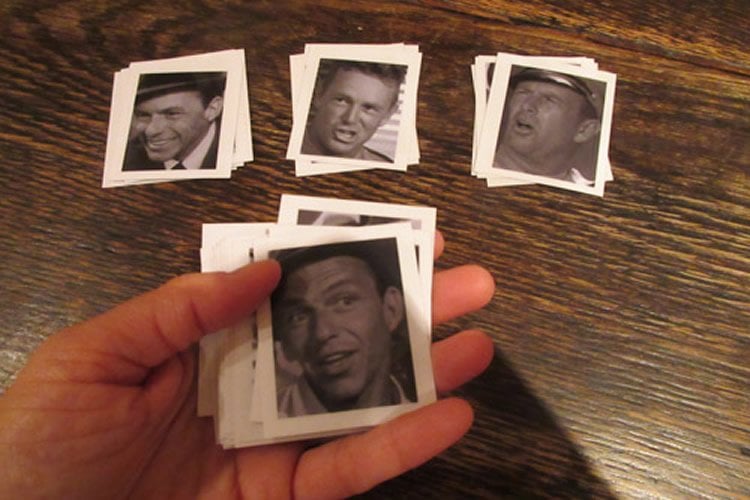Summary: University of Bristol researchers report expressive faces can cause idendity confusion.
Source: University of Bristol.
Photos of the same person can look substantially different. For example, your passport photo may look quite different from your driving licence, or your face in holiday photos.
In fact, these differences can mean you look like a different person from one photo to the next, to those that don’t know you.
Research has shown when photos of an individual’s face are judged too dissimilar to go together, people will tend to think they show several different identities.
Scientists from the University of Bristol tested this concept further by exploring what happens when the photos show faces with different expressions.
Annabelle Redfern from the School of Experimental Psychology led this research which has been published in the journal i-Perception.
She said: “We created packs of 40 cards, each card showing a different face. The packs were either of neutral, un-expressive faces, or of highly expressive faces. We asked people to sort the packs into piles, so that there was a pile for each person.
“Even though there were only two different faces in the packs, people tended to think there were many more – between five and eight on average.

“But when the faces were expressive, people also made another type of mistake: they confused the identities, and were more likely to place photos of both faces together, as if they were of the same person.”
This study shows that expressive faces can cause identity confusions, where photos of different people are thought to be of the same person.
It also demonstrates that we don’t ignore, or factor out, expressions when we recognise someone from their face.
Annabelle added: “The next stage in this research, following up on this study, is to explore what happens when we increase the familiarity of a face.
“As we start to learn a face, and how it expresses itself, then we find that expressions stop hindering the recognition process.
“This makes a lot of sense, if you think about your own experience with faces; if you know someone, you will recognise their face, irrespective of what expression it has.”
Source: University of Bristol
Image Source: NeuroscienceNews.com image is adapted from the University of Bristol news release.
Original Research: Full open access research for “Expressive Faces Confuse Identity” by A. Redfern and C. Benton in i-Perception. Published online September 19 2017 doi:10.1177/2041669517731115
[cbtabs][cbtab title=”MLA”]University of Bristol “Guess Who? Facial Expressions Can Cause Confusion.” NeuroscienceNews. NeuroscienceNews, 20 September 2017.
<https://neurosciencenews.com/facial-expression-confusion-7533/>.[/cbtab][cbtab title=”APA”]University of Bristol (2017, September 20). Guess Who? Facial Expressions Can Cause Confusion. NeuroscienceNews. Retrieved September 20, 2017 from https://neurosciencenews.com/facial-expression-confusion-7533/[/cbtab][cbtab title=”Chicago”]University of Bristol “Guess Who? Facial Expressions Can Cause Confusion.” https://neurosciencenews.com/facial-expression-confusion-7533/ (accessed September 20, 2017).[/cbtab][/cbtabs]
Abstract
Expressive Faces Confuse Identity
We used highly variable, so-called ‘ambient’ images to test whether expressions affect the identity recognition of real-world facial images. Using movie segments of two actors unknown to our participants, we created image pairs – each image within a pair being captured from the same film segment. This ensured that, within pairs, variables such as lighting were constant whilst expressiveness differed. We created two packs of cards, one containing neutral face images, the other, their expressive counterparts. Participants sorted the card packs into piles, one for each perceived identity. As with previous studies, the perceived number of identities was higher than the veridical number of two. Interestingly, when looking within piles, we found a strong difference between the expressive and neutral sorting tasks. With expressive faces, identity piles were significantly more likely to contain cards of both identities. This finding demonstrates that, over and above other image variables, expressiveness variability can cause identity confusion; evidently, expression is not disregarded or factored out when we classify facial identity in real-world images. Our results provide clear support for a face processing architecture in which both invariant and changeable facial information may be drawn upon to drive our decisions of identity.
“Expressive Faces Confuse Identity” by A. Redfern and C. Benton in i-Perception. Published online September 19 2017 doi:10.1177/2041669517731115






